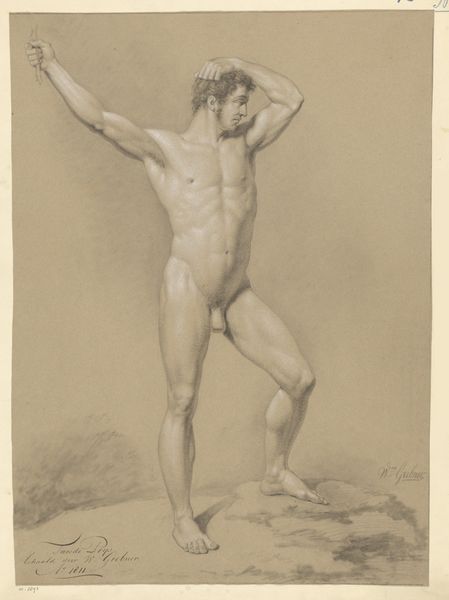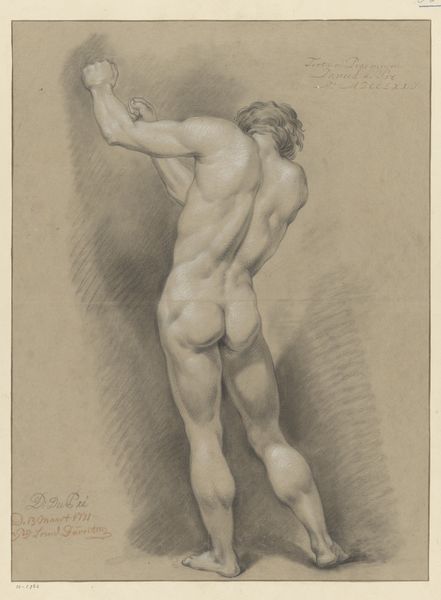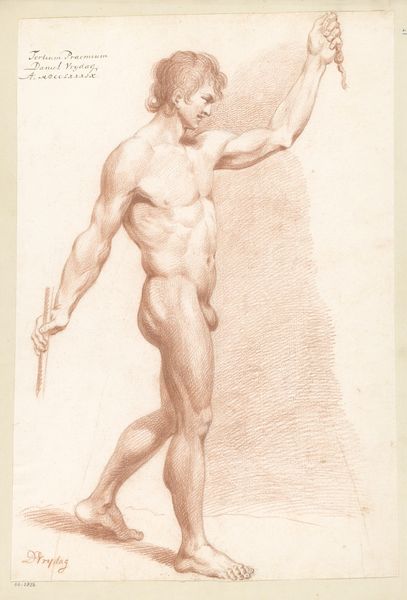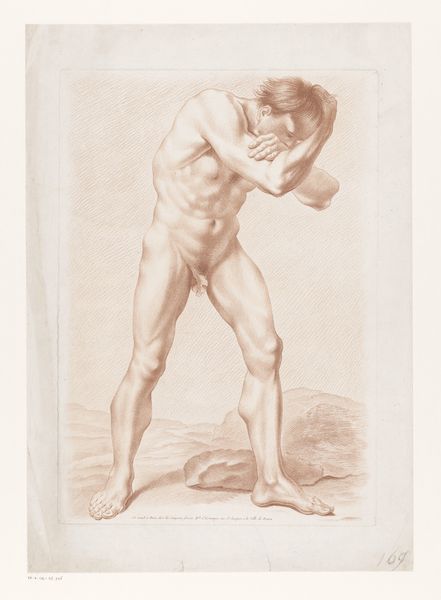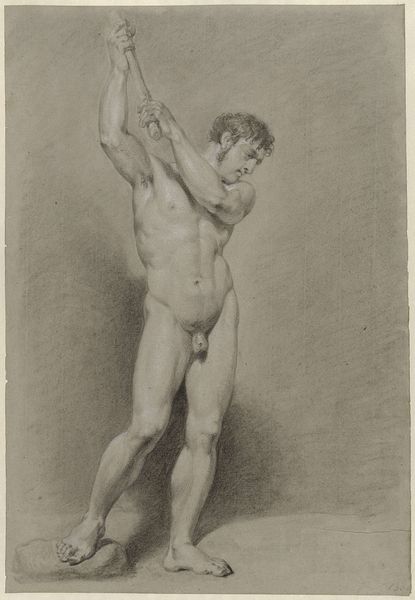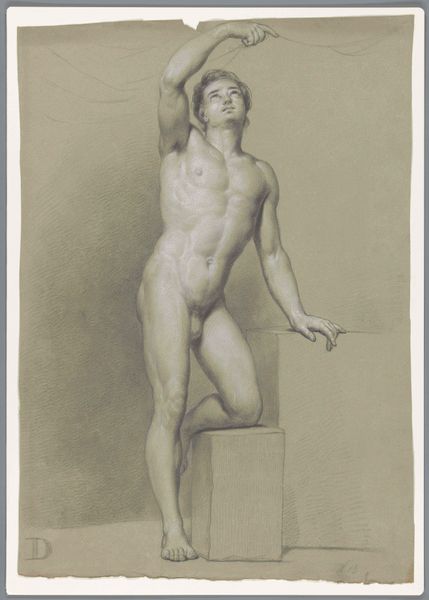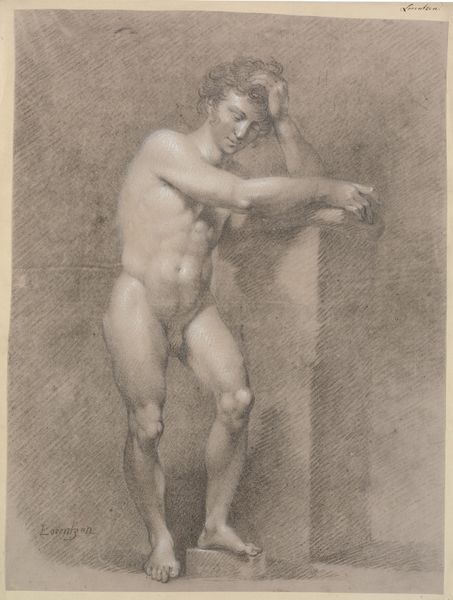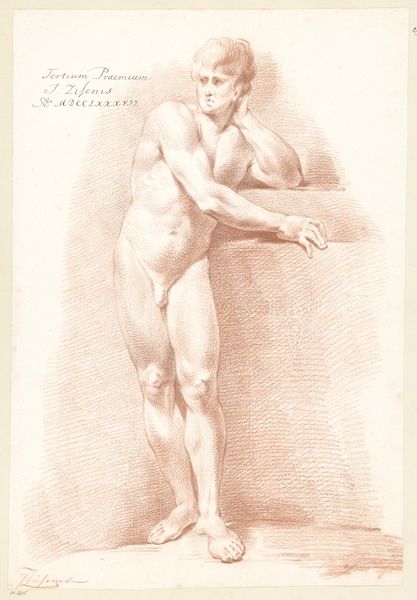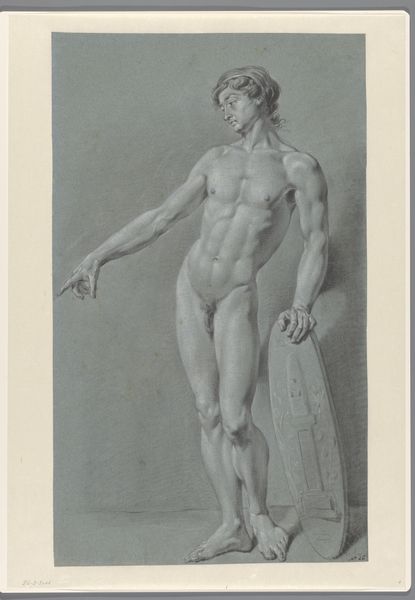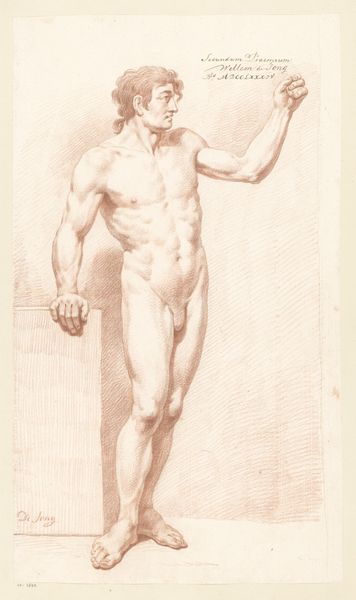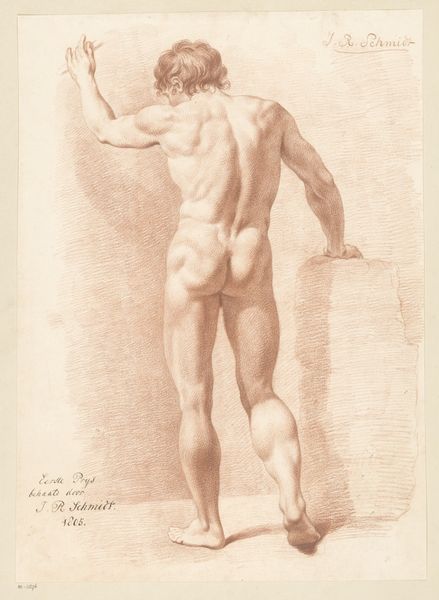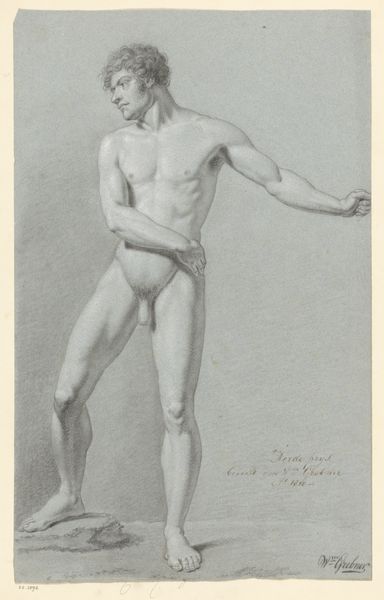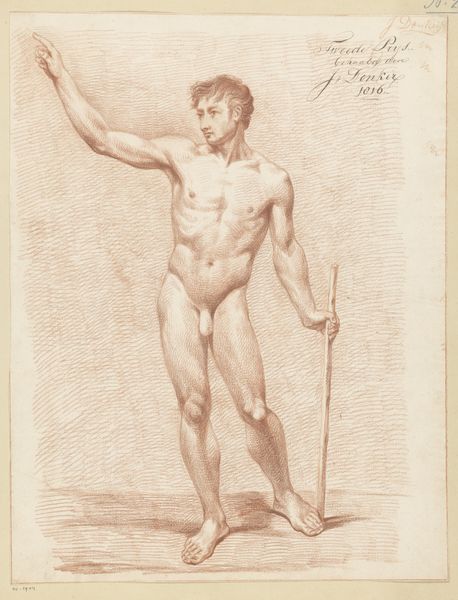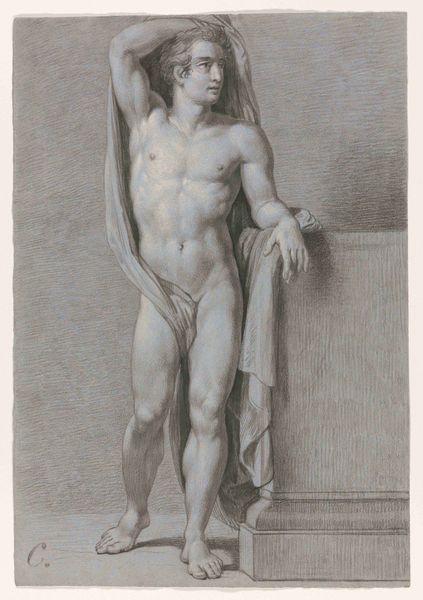
Staand mannelijk naakt, van voren gezien (2e prijs 1804) Possibly 1804
0:00
0:00
drawing, pencil
#
portrait
#
drawing
#
classical-realism
#
figuration
#
form
#
pencil drawing
#
pencil
#
line
#
academic-art
#
nude
#
realism
Dimensions: height 572 mm, width 440 mm
Copyright: Rijks Museum: Open Domain
Editor: This is "Standing Male Nude, Seen From the Front (2nd Prize 1804)," possibly from 1804, by Joannes Echarius Carolus Alberti. It’s a pencil drawing, and I'm struck by how controlled and precise the rendering of the human form is. It's like an exercise in anatomy. What stands out to you about the piece? Curator: The precision you noted reflects the academic tradition and its material constraints. Pencil drawings like this were a means to an end, exercises preparing artists for more 'refined' materials like paint or sculpture. How does seeing this as a practice, as labor, change how you understand the image and its 'nude' subject? Editor: I see what you mean! So, it wasn't necessarily about portraying the ideal male form, but about mastering the craft? It makes it less about beauty and more about skill… Curator: Exactly! And whose skill? Consider the art academy as a factory, churning out artists trained in a particular mode of production. This drawing represents both Alberti’s labour and the Academy's influence shaping artistic labor at the time. How do you think this context affected artistic innovation? Editor: So, on the one hand, it creates this high level of technical skill… but maybe at the expense of individual artistic expression? Curator: Perhaps. And think about the social context: who had access to this kind of training, these materials? The means of production often dictates what art *can* be made. The materiality is as important as the final image. Editor: That's fascinating, framing it in terms of production! I’d never considered the pencil as part of the process impacting artistic expression like that. Curator: Considering the role and limitations of artistic production truly transforms our understanding of the artwork. I'm glad that it offered an insightful angle on your art analysis and views.
Comments
No comments
Be the first to comment and join the conversation on the ultimate creative platform.
